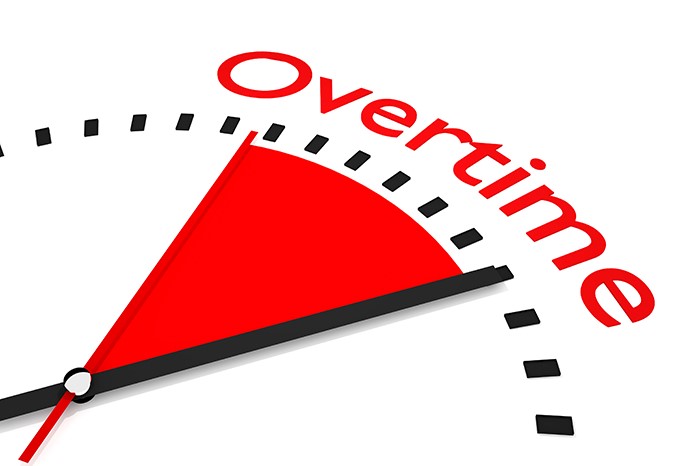
By Michael Burns, courtesy SBAM Approved Partner ASE
At ASE we often get questions from our members about proper overtime pay calculation when different pay plans are at play. To calculate overtime pay for non-exempt hourly employees correctly, one should first determine a few things.
First, what is the regular rate of pay? CCH HRAnswersNow (which all ASE members have access to in the ASE Member Dashboard) provides an excellent recap of how to calculate overtime pay in several circumstances common to many employers.
The following overtime pay recap was presented by Ms. Marie Esposito, Vice President of Payroll BNP Paribas at the annual American Pay Association Congress meeting this year.
Approaching overtime pay requires understanding the basics of pay. This starts with determining what the worker’s regular rate of pay is. The regular rate of pay is the base hourly rate plus the dollar value of any nondiscretionary premium payments. Non-discretionary pay is any payment that is promised up front if some action or result occurs. This includes shift differentials, on-call or call-in pay, hazard pay, retention, commissions, or other types of bonuses contingent upon an action or result happening. Regular rate of pay is not the same as “regular pay.” Regular pay is whatever the worker’s pay is on an hourly, daily, weekly, per piece, or commission basis.
Regular Rate of Pay When Other Nondiscretionary Pay Occurs
What is the regular rate of pay if a worker is paid at $12.00/hr. for working the day shift and is entitled to a shift differential for working several hours on the night shift in a given pay period? Assuming the night shift differential is .50 cents/hr. and the worker worked 25 hours on the day shift and 15 hours on the night shift the regular rate of pay for that week would be $12.19/hr. This is calculated:
$12/hr. x 25hrs. = $300.00
$12.50/hr. x 15 hrs. = $187.50
Total “regular pay” for the week = $487.50
The “regular rate of pay” is calculated by dividing the standard 40-hour workweek into the “regular pay” of $487.50 to get a “regular rate of pay” of $12.19/hr.
Calculating Overtime Pay
The Fair Labor Standards Act (FLSA) requires pay for hours worked over 40 in a week to be 1.5 times a non-exempt/hourly worker’s regular rate of pay. CCH warns that some states may differ in their requirements, so check your specific state’s overtime requirement.
Basic overtime as CCH clearly outlines is calculated:
Assuming a worker’s regular rate of pay is $10/hr. and he/she works 46 hours in a week, overtime pay is calculated by multiplying 46 hours times $10/hr. to equal $460.00. The overtime premium rate is calculated by multiplying the regular rate of $10/hr. by 0.5 to get a premium of $5/hr. for overtime hours worked. The worker above has worked six hours overtime. $5/hr. x 6 hrs. of work = $30.00. Add the weekly rate of $460.00 and the overtime premium pay calculated together with the workers pay comes to $490.00 for that work week.
Blended Overtime/Weighted Overtime

What happens if an employee is paid more than one rate in a workweek? The CCH article and Ms. Esposito provide a five-step method to calculate a blended or weighted regular rate.
Using this method, a worker makes $10/hr. for Job 1 in which he/she works 25 hrs. per week and also works (for the same employer) Job 2 at $11.50/hr. for 8 hrs. per week. The worker also works a third job by which he/she works 10 hrs. at a regular rate of $12.50/hr. How is the blended or weighted regular rate calculated?
Job 1 at $10/hr. times 25 hrs. = $250.00
Job 2 at $11.50/hr. times 8 hrs. = $92.00
Job 3 at $12.50/hr. times 10 hrs. = $125.00
Add the three pay totals up ($250 + $92 + $125) = $467.00 (This is the Total Regular Pay)
Having worked a total of 43 hrs. between the 3 jobs (25 + 8 + 10 = 43) the Regular Rate of Pay is calculated by dividing $467 by 43 hrs. of work to result in a Regular Rate of Pay equal to $10.86/hr.
The overtime rate is calculated by multiplying the regular rate of pay ($10.86) by 0.5. The Overtime Premium Pay is $5.43/hr.
Working three hours overtime results in total overtime paid of $16.29 (3 x $5.43 = $16.29).
Total earnings for the week equal $467.00 + $16.29 = $483.29.
Confusing? Contact SBAM’s Ask An Expert hotline for personalized assistance.